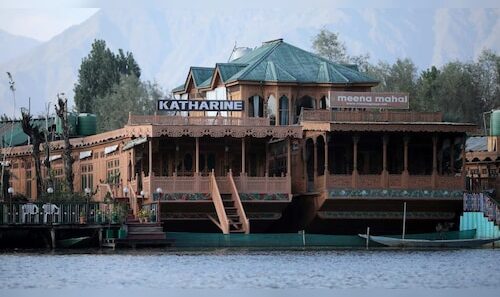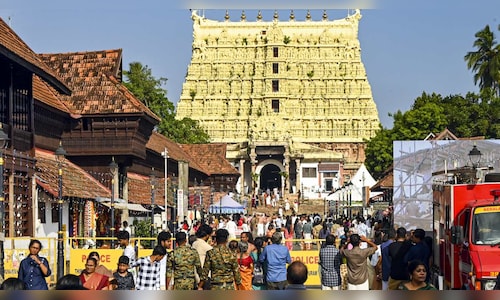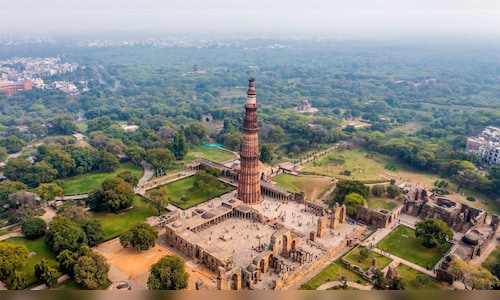The dedication of “thazhikakudams” (the three domes over the sanctum sanctorum), the reinstallation of the Vishwaksena idol, and the ‘Ashtabandha Kalasam’ at the Thiruvambady Sree Krishna Temple (within the main shrine complex) took place in the morning, as stated by temple sources.
“The rituals were executed by priests during an auspicious window from 7:40 am to 8:40 am on Sunday,” they added.
The ceremonies commenced after Moolam Thirunal Rama Varma, the current head of the Travancore royal family, offered prayers at the shrine.
Also read | The construction of Lord Vishnu’s Sudarshan Chakra has been approved on the grounds of Badrinath Temple.
In the presence of Varma and other royal family members, the tantri (head priest) conducted the “Ashtabandha Kalasam” at the Thiruvambady Temple. The reinstallation of the Vishwaksena idol was completed by 8:00 am, according to temple sources.
The newly renovated Vishwaksena idol, which is approximately 300 years old, was crafted using “katu sarkara yogam,” a traditional method that combines unique materials for idol creation. Following this reinstallation, the tantries and priests, accompanied by the royal family head, proceeded in a procession for the dedication of the domes as devotees chanted “narayana” mantras.
Temple authorities made extensive preparations, including the installation of video walls at all four entrances of the shrine, allowing devotees to witness the rare ritual. Long lines of devotees were visible from early morning at the temple entrances.
Kerala Governor Vishwanath Rajendra Arlekar was present throughout the rare ritual, as reported. Various rituals, such as Acharya Varanam, Prasada Shuddhi, Dhara, Kalasam, and others, took place in the days leading up to the “Maha Kumbhabhishekam.”
Also read | A Gujarat man donates diamond-encrusted crowns, a gold bow, and arrow to the Ram Temple Trust.
According to temple authorities, the aim of the Maha Kumbhabhishekam is to enhance spiritual energy and restore the sanctity of the shrine. Such extensive renovations and the accompanying rituals at this centuries-old shrine were conducted after a gap of over 270 years, and it is unlikely another similar event will occur in the coming decades.
(Edited by : Jerome Anthony)

















